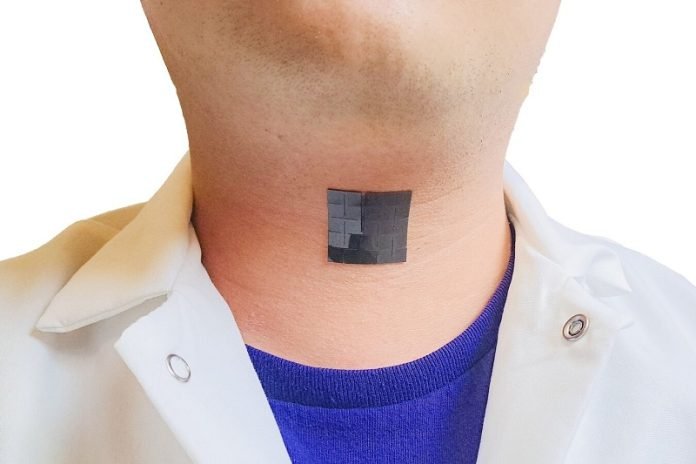
Imagine a world where people who can’t speak due to illness or surgery get a new chance to talk, thanks to a tiny, smart patch.
This isn’t a scene from a sci-fi movie; it’s real science happening now at UCLA.
Engineers there have created a special device that can be placed on the throat and helps people with voice problems to speak again.
This innovative device is the brainchild of Jun Chen, a bioengineering professor, and his team. It’s about the size of a postage stamp and as thin as a credit card.
The device is stretchy and soft, designed to comfortably fit on the outside of a person’s throat.
When someone tries to talk, the device senses the muscle movements in the throat and uses a clever computer program, known as machine learning, to turn these movements into spoken words with almost perfect accuracy.
This isn’t the first time Professor Chen has worked on technology to help people communicate. His team previously made a glove that translates sign language into spoken words in real-time.
But this new throat patch is a big step forward for people who have trouble speaking due to conditions affecting their vocal cords, like after laryngeal cancer surgery.
How does it work? The patch has two main parts. One part picks up the throat muscles’ movements and turns them into electrical signals.
Then, a computer program figures out what those signals mean in terms of words and sentences.
The second part takes these interpreted signals and turns them back into a voice that says the words out loud. The device is smart enough to understand what the person is trying to say and speak it for them.
To make sure the patch works well and is safe, it’s made from materials that are okay for the skin and the body. The main materials are a type of silicone called polydimethylsiloxane (PDMS) and some magnetic materials that help catch the muscle movements more clearly.
The device is quite small, only 1.2 inches on each side, and very light, weighing about as much as a few paper clips.
It sticks to the skin with a special double-sided tape that’s also safe for the skin. This means people can wear it comfortably without worrying about it falling off or hurting their skin.
Voice problems can affect anyone, of any age, and they can be really challenging to live with. Treatments exist, like surgery or voice therapy, but they can take a long time to work and sometimes involve more invasive procedures.
This new device offers a simpler, less invasive way to help people communicate while they’re recovering.
The team at UCLA tested the device on eight healthy people to start with. They asked these volunteers to say or mouth five different sentences, like “Hi, Rachel, how are you doing today?” and “I love you!” The device was able to figure out what they were trying to say with a success rate of over 94%.
Looking ahead, the team wants to add more words and phrases that the device can recognize and test it on people who really need it—those with speech disorders.
This could give a voice back to those who’ve lost it, thanks to the power of technology and a little patch on their throat.
The study was published in the journal Nature Communications.



